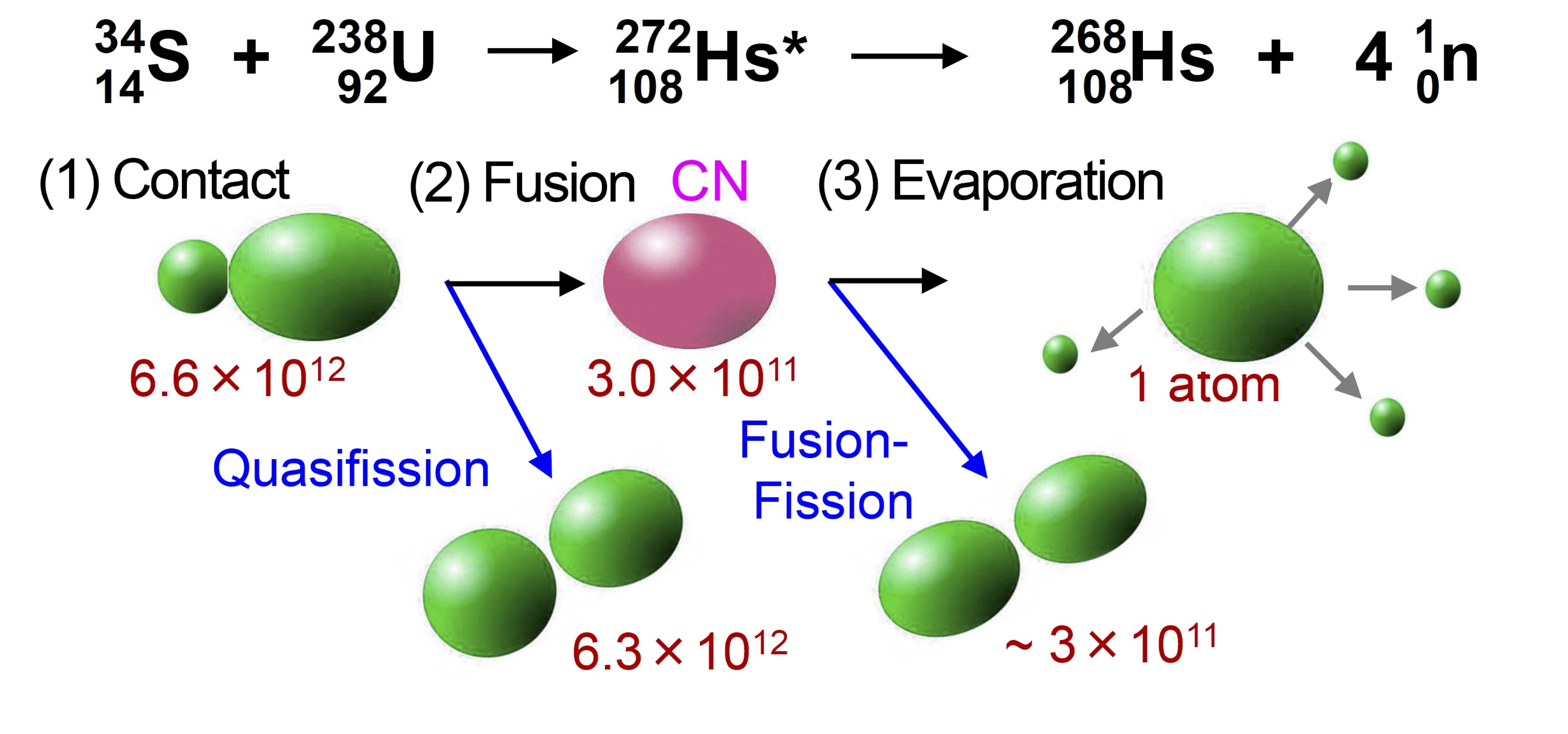重イオンを用いた核反応
We are promoting a heavy-ion induced fission study at the JAEA tandem facility to understand reaction mechanism to produce super-heavy nuclei (SHN) [1-4]. The cross section to produce SHN consists of three parts; i) Cross section to penetrate and/or overcome the Coulomb barrier, ii) fusion probability between two colliding nuclei to form an excited compound nuclei and iii) survival probability of the compound nucleus by evaporating neutrons in competition with fission. We are attempting to establish how to determine the process ii) by measuring the fission properties.
As shown in Fig.1, two types of fission are observed. One is the fission of excited compound nucleus and the other is the quasi-fission. The fraction of quasi-fission among the total fission events is nearly equal to the fusion probability. We have carried out a series of experiment for reactions using 238U nucleus. An idea separation between fusion-fission and quasi-fission is shown in Fig.2, where potential energy surface and the typical trajectories for both types of fission are shown. The figure shows that fusion-fission and quasi-fission generate fragments with different mass asymmetry.
Figure 3 shows the results of experiment. Quasi-fssion is characterized by the mass asymmetry, and the yields enhances with heavier projectile nuclei due to larger Coulomb repulsive force. The yield increases also with lowering the bombarding energy, which was explained by the effects of static deformation of 238U on the reaction. The fusion probabilities were determined from the measured spectra with the help of Langevin model calculation. The estimated values could explain the cross sections of seaborgium and hassium isotopes produced in the reactions of 30Si + 238U [2] and 34S + 238U [3].



参考文献
- K. Nishio et al., Phys. Rev. C, 77, 064607 (2008).
- K. Nishio et al., Phys. Rev. C, 82, 044604 (2010).
- K. Nishio et al., Phys. Rev. C, 82, 024611 (2010).
- K. Nishio et al., Phys. Rev. C, 86, 034608 (2012).